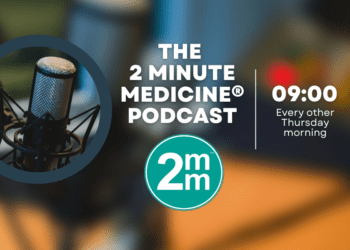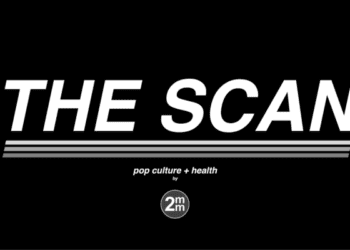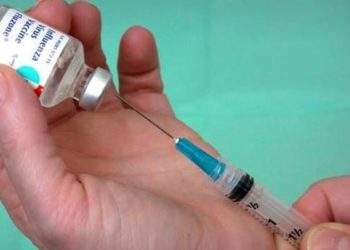Patient Basics: Guillain-Barre Syndrome
Originally published by Harvard Health.
What Is It?
Guillain-Barré syndrome is an uncommon disorder that causes damage to the peripheral nerves. These nerves send messages from the brain to the muscles, instructing the muscles to move. They also carry sensations such as pain from the body to the brain. The nerve damage often causes muscle weakness, often to the point of paralysis, and can cause problems with sensation, including pain, tingling, “crawling skin” or a certain amount of numbness.
Guillain-Barré syndrome can become a medical emergency if the weakness affects the chest muscles responsible for breathing. If chest muscles become paralyzed, the patient can die from lack of oxygen. People with this syndrome must be carefully monitored, usually in a hospital, to make sure that breathing and other vital functions are maintained.
Guillain-Barré syndrome is an autoimmune disorder in which the body’s immune system attacks and destroys the myelin sheath, which wraps around long nerve cell bodies much like insulation around a water pipe. Myelin protects the nerve and helps to speed the transmission of electrical impulses down the nerve. If the myelin is destroyed, nerve impulses travel very slowly and can become disrupted. If muscles don’t get proper stimulation through the nerves, they will not function properly.
The causes of the syndrome are unknown, but many experts think that the immune system is trying to fight an infectious organism (bacteria or virus) and accidentally injures nerve tissue in the process.
Guillain-Barré syndrome is uncommon, affecting fewer than 4,000 people in the United States each year. Why the disorder strikes some people is a mystery. In more than two-thirds of patients, Guillain-Barré syndrome occurs one to three weeks after a viral disease, including the common cold, flu, or infection with human immunodeficiency virus (HIV), Epstein-Barr virus or cytomegalovirus. The most common infectious trigger seems to be a bacterial infection with Campylobacter jejuni, which causes intestinal infections. Occasionally, Guillain-Barré syndrome seems to follow immunization, surgery or bone marrow transplantation. Research into the causes of Guillain-Barré syndrome is ongoing.
Symptoms
Symptoms of Guillain-Barré syndrome vary from person to person and may be mild or severe. Most often, the first obvious symptom is weakness, and most often the weakness is felt in both legs. Over time, the weakness often involves the arms or head, affecting eye and head movement and speech. Occasionally, the weakness will affect the arms or muscles of the head before affecting the legs.
Sometimes the weakness is preceded or accompanied by a sensation of tingling, most often in the lower legs and feet. With each muscle group affected, there also can be pain and/or tingling. Guillain-Barré syndrome can temporarily impair the body’s control of blood pressure, leading to dangerously low blood pressure when the person rises to stand after lying down or sitting.
The disorder progresses quickly, with most patients experiencing the worst weakness of legs, arms, chest and other muscle groups within three weeks of the start of the disease. In some cases, the weakness may worsen very rapidly. When this happens, weakness in the legs can become complete paralysis of the legs, arms and muscles of breathing over the course of hours or a few days. For that reason, a person who develops sudden weakness in the legs or arms should contact a doctor immediately.
The weakness may last days, weeks or months before sensation begins to return. Returning to pre-illness strength and functioning can take months or years. Most patients return to normal within months.
Diagnosis
Guillain-Barré syndrome can be difficult to diagnose in its earliest stages because other disorders may have similar symptoms, and because the exact symptoms experienced may vary from patient to patient.
Your doctor will ask you about your medical history and your symptoms.
Two tests may be performed to help your doctor determine the diagnosis:
- Spinal tap — In this test, a needle in inserted into the lower back to draw out some of the cerebrospinal fluid, the liquid that surrounds the spinal cord and brain. The cerebrospinal fluid of people with Guillain-Barré syndrome usually has higher-than-normal levels of protein.
- Nerve conduction velocity test — In this test, small metal plates called electrodes are placed on the skin over the nerve to be tested. An electrical impulse is fed through one electrode placed on the upper part of the nerve and picked up by the other electrodes placed on lower parts of the nerve. The test measures how quickly the electrical impulse travels down the nerve from the upper electrode to the lower electrodes. Nerves affected by the disorder will conduct signals more slowly than unaffected nerves.
Expected Duration
There is no way to predict how long Guillain-Barré syndrome will last. The symptoms usually reach their peak by about the third week of the disorder. The symptoms can remain at that level for days, weeks or months, and then gradually get better. Strength slowly returns. It may take only several weeks or as long as three years. Most people recover completely within a few months, but some never regain full strength and may require surgery, physical therapy or orthopedic appliances to correct problems or train the body to adapt.
Prevention
Because no one knows what causes Guillain-Barré syndrome, there is no way to prevent it.
Treatment
Most patients with Guillain-Barré syndrome are hospitalized, because the disorder can weaken the chest muscles to such an extent that breathing becomes difficult or impossible. In a hospital, patients can be monitored and put on a respirator, if necessary. If Guillain-Barré syndrome causes paralysis of the leg or arm muscles, the affected person will need help with activities of daily living such as eating and eliminating wastes. Close monitoring of cardiac function and blood pressure and other supportive care (including psychological support, pain control, skin care, prevention of blood clots, and physical therapy) are also important.
Two treatments have been shown to reduce the severity of Guillain-Barré syndrome and speed recovery:
- Plasmapheresis (or plasma exchange) is a process in which blood is removed from the patient, and then separated into plasma (the liquid portion of blood) and blood cells. The blood cells then are put back into the body. The body manufactures more plasma to make up for what was removed. No one knows why this treatment works, but most scientists believe that plasmapheresis removes substances that contribute to the immune system’s attack on the peripheral nerves.
- Infusions of immunoglobulin, a mix of antibodies that are produced naturally by the body’s immune system. High doses of immunoglobulin may work by blocking the antibodies that may have contributed to the disorder.
These two types of treatments are considered equally effective; the choice of treatment is usually determined by factors such as treatment availability and patient preference. IVIG is often chosen due to its ease of administration. Other treatments for Guillain-Barré syndrome are under investigation.
After recovery has begun, patients likely will need physical therapy to help them regain strength and proper movement.
When To Call A Professional
Call a health care professional immediately if you experience weakness in your legs, arms or the muscles of your head that gets worse over a few hours or days.
Prognosis
The long-term outlook for Guillain-Barré syndrome is generally good. Most patients recover fully, although it can take months or years to regain pre-illness strength and movement. About 30% of patients still have some weakness three years after the illness strikes. About 3% of patients have weakness and tingling return years later. About 3% to 5% die, almost always because they develop paralysis of the chest muscles before they have reached a hospital.
Additional Info
National Institute of Neurological Disorders and Stroke
P.O. Box 5801
Bethesda, MD 20824
Toll-Free: (800) 352-9424
http://www.ninds.nih.gov/
American Academy of Neurology (AAN)
1080 Montreal Ave.
St. Paul, MN 55116
Phone: (651) 695-2717
Toll-Free: (800) 879-1960
Fax: (651) 695-2791
http://www.aan.com/



